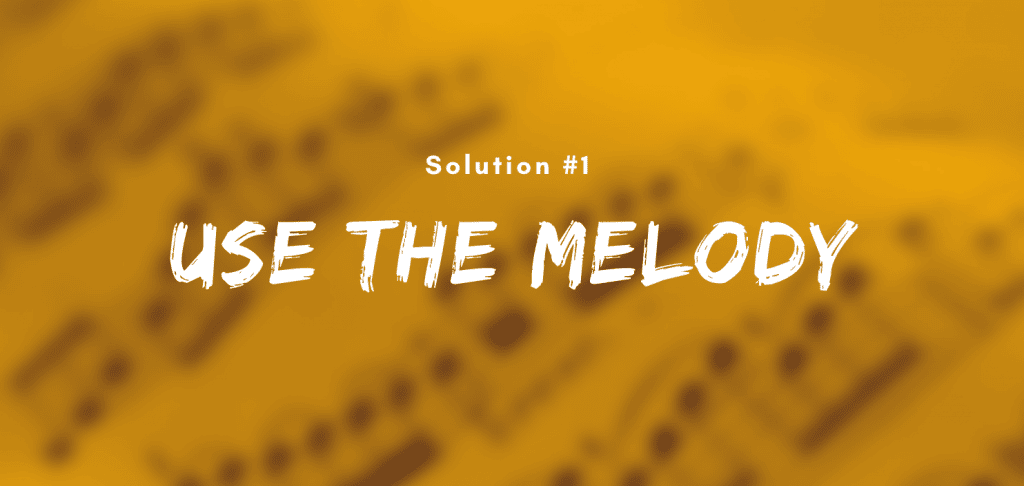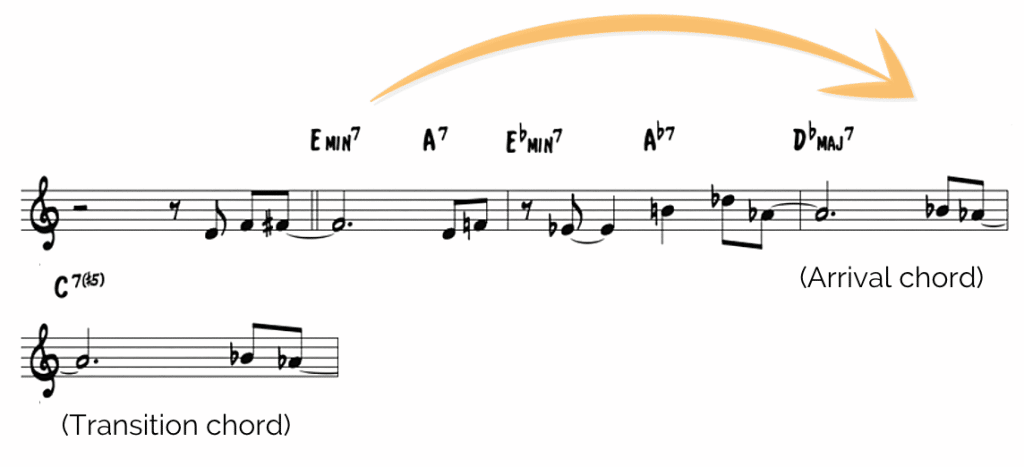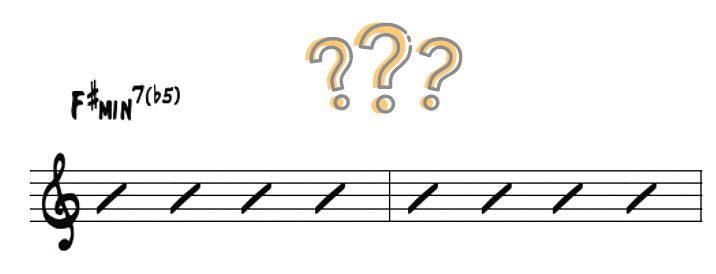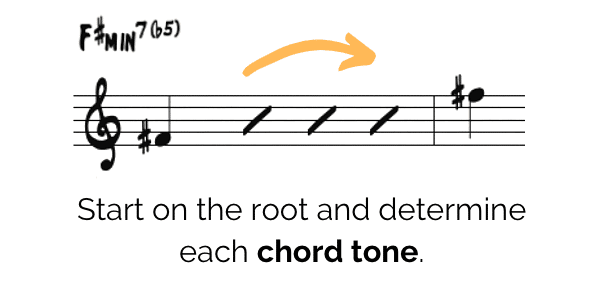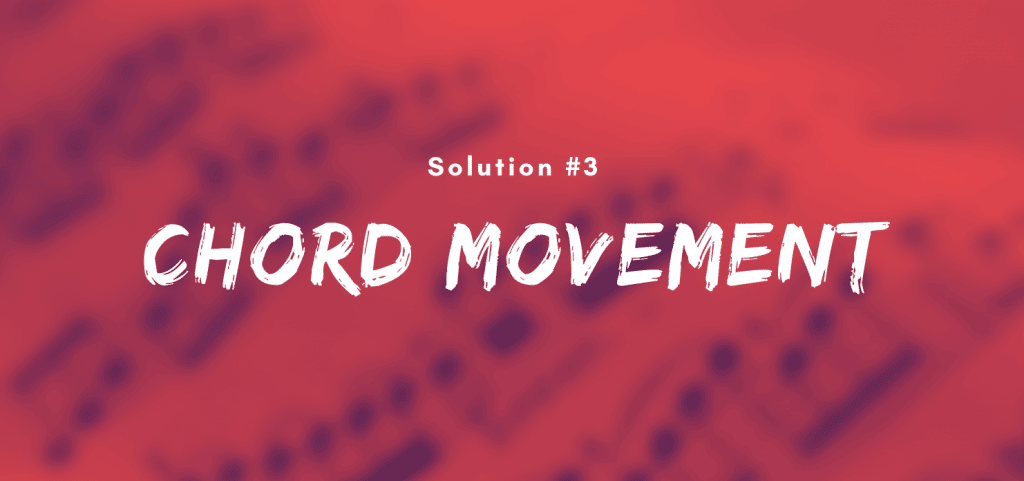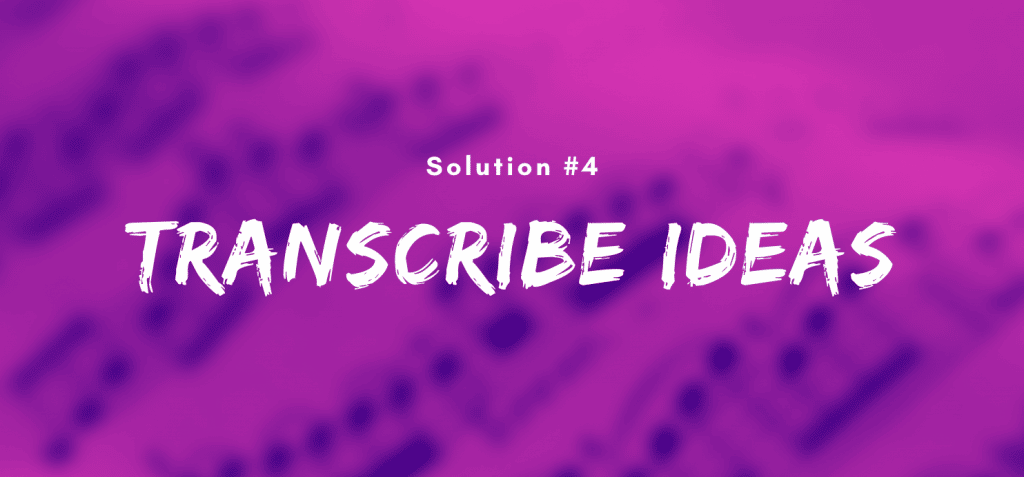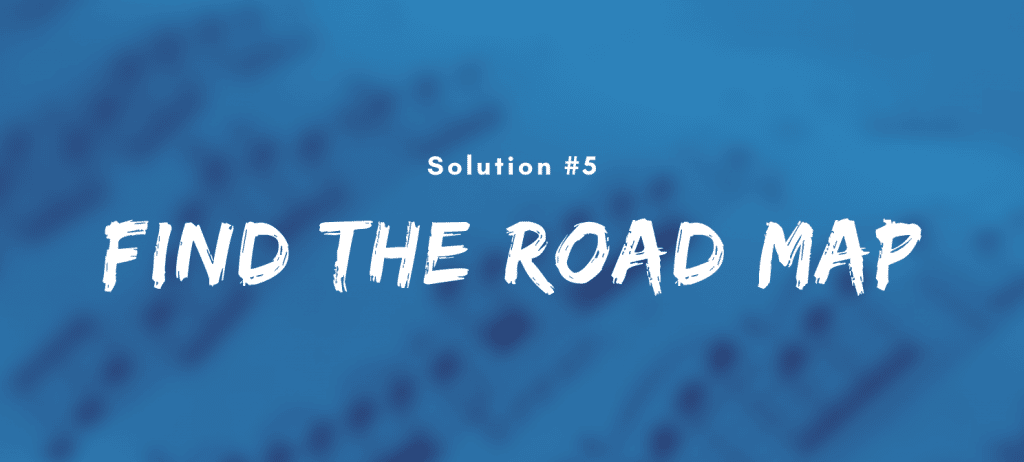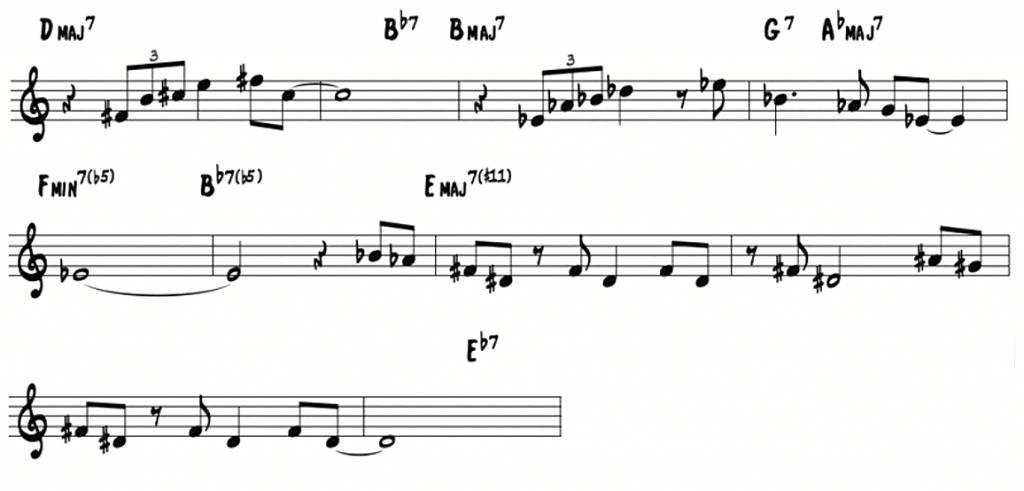Every musician knows the feeling…You’ve picked out a tune to learn in the practice room. You’ve figured out the melody and memorized the chord progression. And you’re ready to start improvising your solo. Then it happens…you hit a wall.
All of a sudden you can’t seem to find the right notes to play, no matter what you do.
Day after day you try a new approach, but still there’s no difference. The same musical roadblocks keep popping up in the chord progression. It seems like no amount of practice can change it…You’re simply stuck.
Sound familiar? I’ve run into this situation in the practice room more than I care to admit. There have been dozens of tunes I’ve struggled with – Stella by Starlight, Stablemates, Confirmation, Moment’s Notice and Giant Steps. The list could go on and on.
And before that tunes like All Blues, Rhythm Changes, and Have You Met Miss Jones posed their own frustrating challenges…
In each case I technically “knew” the song. I could name all of the chords and play the melody from memory. Yet when it was time to improvise, I struggled to find any notes or phrases that sounded musical.
Like many musicians, I tried arpeggios, scales, and came up with patterns. And I studied music theory approaches and jazz method books. But nothing sounded musical, and to be honest, I wasn’t really improvising or playing the stuff that I was hearing.
So what exactly do you do in situations like this to overcome your musical roadblocks??
The solution is actually simpler than you might expect. In this lesson we’ll show you the five simple steps that’ll turn things around for good…
5 Steps to Breaking out of a rut
Every tune in the jazz repertoire poses some sort of challenge…
It doesn’t matter if it’s the familiar standards we learn when we’re starting out or the more complex tunes we encounter from masters like Wayne Shorter, Woody Shaw, Joe Henderson, and beyond.
These obstacles to improvisation can come in the form of the key, unfamiliar chord types, confusing chord progressions, fast (or slow) tempos, and odd meters to name a few…
Playing a musical solo in these situations requires more than basic music theory or straight-up memorization. It requires specific techniques that will unlock these barriers when they pop up.
Rather than forcing yourself to run through chord progressions for hours in the practice room, hoping for a breakthrough, you need a plan of action that will actually produce results.
Below we’ll show you 5 steps to finding the right notes in any tune you play…
I) Use the Melody as a Model
The first solution to any tune that gives you trouble is hiding in plain sight – I’m talking about the melody!
The catch however, is that most of us never spend enough time paying attention to it…
Remember, a tune is not just a theory exercise or notes to memorize – it’s music. The melody is the doorway to understanding the harmonic relationships and larger form, it’s the key to getting the “story” of the tune in your mind and your ear.
Beyond learning the notes, you need to understand why the melody works.
The secret to any tune lies in the melody…which chord tones to use, how to phrase over the progression, how to connect the harmony, which chords are arrival spots. This information is right there for you if you simply take a moment to study it!
Why are certain notes emphasized and how do they relate to the underlying harmony? Keep in mind that the chord progression and the melody are interconnected – understanding one gives you insight into the other.
Here are a few preliminary steps to take when it comes to melodies…
- Learn the melody by ear – phrase by phrase from the recording
- Sing it – ingrain it in your ear and connect to the sound of the music on a physical level
- Analyze the intervals, chord tones, and phrasing. How do these notes and phrases relate to the underlying chords? What about the melody defines the character of the tune?
After spending some time listening to, ingraining, and analyzing the melody, ask yourself: How can I use these same tactics to create melodic lines in my own solo?
As an example, let’s take a look at the standard Stablemates by Benny Golson, a tune that you often hear called at jam sessions…
The progression begins with the following chords:
This chord sequence is challenging – how do you move from the opening measure to the next one? The chords aren’t related and it’s easy to fall into a chromatic ii-V lick pattern approach – not exactly the most musical route.
Let’s check out the melody…
Here we have a model for how you can navigate the chords in a musical way. First, look at which notes the melody is using or emphasizing…
On the E-7 the 9th is emphasized, then moving to the next bar, an F natural is moving down a half-step. Instead of cut and paste chords or inserted ii-V licks, the melody is emphasizing the stepwise harmonic movement between the first two bars.
How might you incorporate this descending stepwise motion into your own melodic approach to the opening bars?
Next look at the phrasing of the melody:
The opening phrase is 4 bars, single idea instead of moving chord by chord. The goal of this line is the Db chord preceded by a ii-V. Can you create your own phrases using this same approach?
The purpose of studying the melody is not only to learn the notes, but to absorb the musical tactics the melody is using over the chord progression – this is where you’ll benefit the most in your solos.
II) Isolate individual chords
One of the common ways we get tripped up on a tune is when an unfamiliar chord pops up…
A sudden stretch of a V7b9 chord, an F#ø chord, or a Major7#5 sound. What exactly do you play over these chords?
In these situations we often end up guessing, playing an arpeggio or a scale that we think will work, or simply skipping over the sound altogether…However, this isn’t going to cut it, especially if your goal is to play musically and creatively.
With any tune that you play make sure there are no “gray areas” or spots where you’re guessing at the harmony. To play a musical solo you need to completely know every chord!
When it comes to these mystery chords don’t rely on a leadsheet, don’t settle for what people say you’re supposed to play, or a scale that you think is right. Get in there and figure out the sound for yourself.
How do you define this chord in your mind, what techniques can you find to play over it??
When you encounter a chord that you’re unsure of the first step is to isolate the chord and figure it out piece by piece.
Here’s an example from Joe Henderson’s tune Inner Urge:
Check out the opening chords:
This is where the confusion begins for many players – the first chord. But rather than running the tune down a bunch of times, simply isolate the chord in question. What do you play over this F#-b5 sound?
A great way to determine this is to play the chord at the piano or create a loop that sustains the chord, kinda like your own background track. Then take out your instrument and figure out the sound one note at a time…
Start with the root and work your way up step by step, playing each note. Go slowly and hear the sound of each note, following your ear to find the notes that work:
Do you hear a G natural or a G#, a D natural or a D#? Maybe both work…Use your theory knowledge of the chord along with your ear to find the notes that work for you.
Not sure where to start? Reference the melody and see which notes are used, emphasized, or sustained:
Now, with the notes defined, how are you going to think about this sound?
A harmonic minor scale, a particular chord structure – B7, E-, a triad, a pattern based on 4ths and 5ths? These all lead to different creative options. It all depends on your ear, the surrounding chords, and the particular voicing.
It’s important to keep in mind that here is no “one size fits all” scale or approach for every chord type – it’s unique for each tune and what you’re personally hearing.
Use this technique for each chord that you’re unsure of or stuck on in the tunes you’re learning. It might be a sus chord, lydian sounds, altered dominant chords, or a plain old Major7 chord.
Stop guessing on these sounds, skipping over them, or using a scale that someone else tells you to play. Go to the recording and figure out how these sounds work the way you hear them!
III) Focus on chord relationship
The next stumbling block that often pops up in tricky tunes is figuring out how to connect chords that seem unrelated or foreign…
After you define the individual chords in a tune, how do you get from one chord to the next?
Here are a couple preliminary questions to think about as you scan the progression:
- Do you recognize any common chord progressions?
- Can you apply techniques and language that you already have?
- Are any common chords or progressions substituted making an otherwise typical progression look strange? (Tritone sub, backdoor ii-V)
Sometimes you’ll encounter an unconventional progression that you don’t have tools for. In this case you’ll have to break it down and figure it out slowly, one step at a time, isolating and repeating the movement between these two chords.
Let’s take a look at one example of this. Listen to Woody Shaw’s tune The Moontrane:
Here are the first two chords to this tune…
In this tune you don’t have traditional chord movement or ii-V-I progressions. You’ve got a BbMaj7#11 moving to Amin7…
After making sure you have each chord defined, look for common chord tones between the two sounds:
Even though these chords seem unrelated at first glance, they share a number of common tones, (A, C, E, G).
Next look at the melody for clues to how these sounds are connected:
Using the tactics above from the first step, look at which chord tones are used and look at the phrasing.
The melody is mainly using notes from the A minor (CMaj) pentatonic over both sounds in one seamless phrase, and this an approach that you can use in your solos.
Use this same tactic with any set of chords that is giving you trouble – look for common tones, reference the melody, and determine where the harmonic progression is headed.
IV) Transcribe some ideas
When in doubt, check out how the great players are approaching the same chords, progressions, and tune you’re working on.
This means checking out the specific notes and lines your favorite players improvise over these tunes and transcribing their ideas.
Learning language from your heroes is a great exercise for breaking out of the tunnel vision we sometimes get when learning a tune. It’s also useful when you’re looking for new ideas or to solve a problem.
Transcribing is like instantly getting a new perspective, seeing how a great player hears and thinks about the same chord or progression that is giving you problems.
Let’s take a look at an example. Let’s say you’re learning Joe Henderson’s tune Punjab…
Maybe the opening chord sequence is giving you a hard time in your solos:
What the heck do you play over this chord progression that will actually sound musical and creative??
Why not check out what Joe Henderson plays over this sequence in his solo? Here’s a line he plays on a live recording from 1992 with his big band:
In his opening phrase he creates a simple melodic motif starting on the 7th of each Major7 chord:
A logical musical line that ties together an otherwise unrelated chord sequence.
This is a great starting point for approaching the progression and creating your own ideas. What other melodic motifs can you come up with using Joe’s approach as a model?
V) Define the musical road map
After studying the steps above, it’s time to put everything together.
It’s not enough to simply have a sequence of memorized chords, you have to know how these sounds fit together and why they work…
You need a road map of the tune.
Expand your vision of the tune beyond the individual chords and look at the big picture of the harmonic relationships happening in the progression.
The progression to any tune is a journey from point A to point B all the way to the last chord of the progression. Each chord leads to the next in some way – it might not be obvious, but there is a method to the madness!
As you study a chord progression that is difficult to play over, ask yourself…
- What is the overall key and important harmonic arrival points?
- How are these arrival points related? Are they diatonic or following some other relationship?
- Can you identify common resolutions like V7 – I movement or related substitutions?
The goal is to study the harmony and develop a mental map of the tune before you play your solo. To see what I mean let’s take another look at the first ten bars to Joe Henderson’s tune Punjab:
At first glance it’s hard to determine the chord relationships or the road map of the tune, and the tendency is to just jump in an improvise over each chord separately.
But take another look and you’ll begin to see the connections…
Start by looking for the harmonic arrival points in the tune:
What is the relationship between these points? The harmony is descending by minor 3rds – DMaj to BMaj to AbMaj. Now how are these chords connected?
After the initial DMaj they are approached by a V7 chord a half-step below the root, a sort of V7 substitute. Then you have a ii-V7 to Eb minor that instead resolves to EMaj7#11 – a closely related sound as we saw in the Moontrane above.
So the first part of your “road map” for this tune would be start in DMaj, descending by minor 3rd to B and minor 3rd to Ab. Then another minor 3rd down to the Eb- ii-V that resolves to EMaj7#11.
When you understand this larger harmonic relationship, you’ll not only have a clearer picture of where the tune goes and be able to create longer phrases, you’ll have more freedom.
You won’t be chained to every single chord, but seeing the larger direction of the progression. You can develop phrases and your solo over a bigger picture, planning and seeing ahead rather than moving chord to chord and reacting.
This is where your musicality and creativity will start to shine!
Give it a try…
If you find yourself stuck on a tune, confused about the chords, and unsatisfied with the way you’re improvising, give these 5 steps a try.
It could be Autumn Leaves or a completely modern tune, the process is the same for each:
- Start by ingraining and studying the melody
- Isolate and define each chord in the progression in detail
- Focus on chord to chord relationships
- Transcribe ideas to get your creative juices flowing
- Develop a mental road map of the tune
Each of these steps is connected and can be done simultaneously, and they should be part of your approach to learning any tune, whether it’s a common standard or a challenging and unconventional tune.
Even though many tunes can seem impossible at first, there is a solution out there – you just have to be patient and diligent with your approach!

